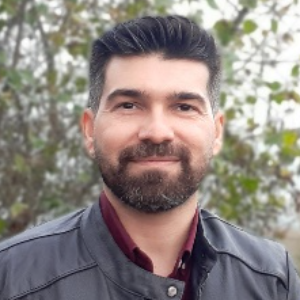Title : The role of efferocytosis in stem cell-based tissue engineering
Abstract:
Tissue engineering is a rapidly evolving field that aims to develop new approaches for tissue regeneration using a combination of cells, growth factors, and biomaterials. Stem cells, in particular, hold great promise for tissue engineering due to their ability to differentiate into various cell types and their potential for self-renewal. However, the success of stem cell-based tissue engineering relies on the proper integration and function of the transplanted cells within the host tissue. This is where efferocytosis, the process of clearing dead or dying cells, plays a crucial role. Efferocytosis is essential for maintaining tissue homeostasis and preventing inflammation. In the context of stem cell-based tissue engineering, efferocytosis can help to ensure the proper integration and function of the transplanted cells. When stem cells are transplanted into damaged tissue, they may undergo cell death due to various factors, such as lack of oxygen or limited nutrient supply. If not cleared efficiently, these dead or dying cells can release intracellular contents that could trigger an immune response and impair the healing process. Professional and non-professional phagocytes are responsible for efferocytosis, with the process involving the recognition of "find me" and "eat me" signals, followed by phagosome-lysosome fusion and digestion of apoptotic cells. Defective efferocytosis has been linked to various inflammatory disorders, such as atherosclerosis and rheumatoid arthritis. Stem cells have been shown to enhance efferocytosis by releasing soluble factors that attract phagocytes and promote their activation. Furthermore, stem cells can differentiate into phagocytes themselves, further contributing to the clearance of apoptotic cells. Mesenchymal stem cells, in particular, have been shown to enhance efferocytosis through the production of various cytokines and growth factors, such as TGF-β and IL-10. In addition to promoting the clearance of apoptotic cells, stem cells can also modulate the immune response and enhance tissue repair through the production of various cytokines and growth factors. For example, mesenchymal stem cells can secrete factors that promote angiogenesis and reduce inflammation, thereby enhancing tissue regeneration. In summary, efferocytosis plays a crucial role in stem cell-based tissue engineering by ensuring the proper integration and function of transplanted cells. Stem cells can enhance efferocytosis through the secretion of soluble factors and differentiation into phagocytes. Further research is needed to fully understand the mechanisms underlying the interaction between stem cells and efferocytosis and to optimize their use in tissue engineering applications.
Audience Take Away:
- The audience will learn about the critical role efferocytosis plays in stem cell-based tissue engineering and the mechanisms underlying this process. They will gain insights into how stem cells, particularly mesenchymal stem cells, can enhance efferocytosis and tissue regeneration by promoting angiogenesis, reducing inflammation, and modulating the immune response. The presentation will also cover various cytokines and growth factors involved in efferocytosis and their potential clinical applications in regenerative medicine and tissue repair.
- By understanding how stem cells can improve efferocytosis, the audience can optimize their tissue engineering techniques and maximize the integration and function of transplanted cells within the host tissue. This knowledge can be useful for researchers, faculty, and designers in developing new approaches for tissue regeneration and expanding their research in the field of medical biotechnology.
- The practical solutions provided by this research can simplify the job of designing tissue engineering strategies, improve the accuracy of design, and provide new information to assist in design problems. Additionally, the potential clinical applications of stem cell-based tissue engineering provide a promising avenue for the development of novel therapies for various diseases and injuries.



